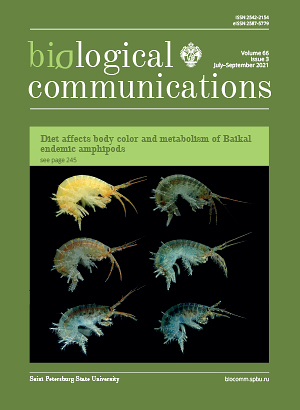Analysis of the polydispersity of soil-like bodies in glacier environments by the laser light scattering (diffraction) method
DOI:
https://doi.org/10.21638/spbu03.2021.302Abstract
This study presents the results of polydispersity analysis of soil-like bodies from two various polar regions using the laser light scattering method. The differences in the particle size distribution of cryoconite samples from the Anuchin Glacier (Antarctica) and the Mushketov Glacier (Arctic) are described. The samples obtained from the Mushketov Glacier are characterized by a finer particle size distribution than samples collected on the Anuchin Glacier. While comparing our results with previously published studies, it was found that the method of laser light scattering shows a lower content of small fractions (<0.05 mm) compared to the classical methods of sedimentation, since these methods are based on fundamentally different physical principles. The laser method used requires low amounts of samples (0.2–0.5 g), while the classical sedimentary method uses a higher gravimetric portion of cryoconite (5–10 g), which is critical for field sampling.
Keywords:
soloids, cryoconites, Anuchin Glacier, Mushketov Glacier
Downloads
References
Downloads
Published
How to Cite
License
Articles of Biological Communications are open access distributed under the terms of the License Agreement with Saint Petersburg State University, which permits to the authors unrestricted distribution and self-archiving free of charge.





